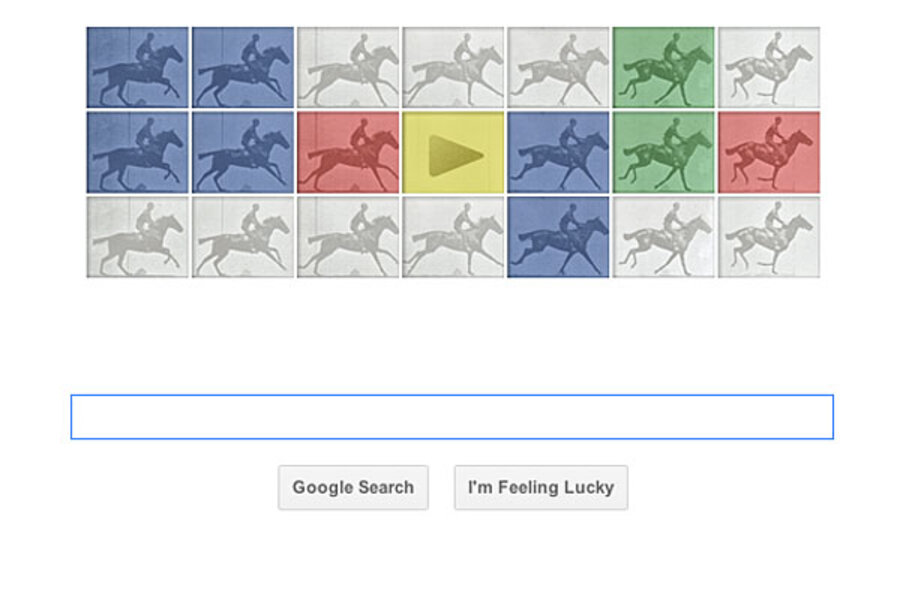Google Doodle celebrates Eadweard J. Muybridge, Father of the Zoopraxiscope
Today's Google Doodle is an homage to Eadweard Muybridge, the father of the Zoopraxiscope.
The Zoopraxiscope was built during the quest to answer the question: Do all four legs of a galloping horse leave the ground at once?
Eadweard Muybridge was hired by the former governor of California, Leland Stanford, to answer the question. From1877-79, Muybridge took a series of photographs of the horse "Oxident" at Stanford's farm at Palo Alto. He set up a camera shed with 12 (later 24) cameras, each with shutters attached to threads. When a horse broke a thread as it passed in front of the camera, the shutter dropped and an instant exposure was taken. One of those stills clearly showed the horse with all four legs off the ground. But Muybrdge wanted to find a way to display the horse in motion.
In 1879, Muybridge invented the Zoopraxiscope – the forerunner to the motion picture projector.
The Zoopraxiscope was initially called the Zoogyroscope. Perhaps, Zoogyroscope was too difficult to pronounce or didn't have quite the right ring. So, Muybridge dubbed his device the Zoopraxiscope. Either way, this was actually an enhancement of old Phenakistiscope or 'spinning picture disc' invented in the 1830s.
Muybridge's machine had a spinning 16-inch glass disc with images of the galloping horse on the disc.
Muybridge debuted his Zoopraxiscope projections at Mayfield Grange, the stud farm and home of former Calif. Gov. Stanford in Palo Alto in the autumn of 1879. It is, according to the Kingston Museum (in England, where Muybridge was born) "one of the earliest motion picture audiences (where photography was the original method of capturing, in real time, the movement shown in the drawings)." All of the zoopraxiscope glass discs in Muybridge's possession at the time of his death in 1904 were bequeathed to Kingston Museum.
In recent years, Google has not been alone in honoring the works of Muybridge. Australian singer John Farnman used his "Horse in Motion" in a 1986 music video for the song "Pressure Down." In 1985, Larry Gowan featured rotoscoped animation in his single "Strange Animal." In 1993 U2 jumped on the Muybridge bandwagon with walking men (the subject of later Muybridge studies) and a galloping horse sequence in "Lemon." In 2004, The Crystal Method also produced a music video for the song "Born Too Slow" that included a tribute to Muybridge
The play "Studies in Motion: The hauntings of Eadweard Muybridge" debuted in 2006, a co-production between Vancouver's Electric Company Theatre and the University of British Colombia Theatre. The production toured Canada in 2010.






